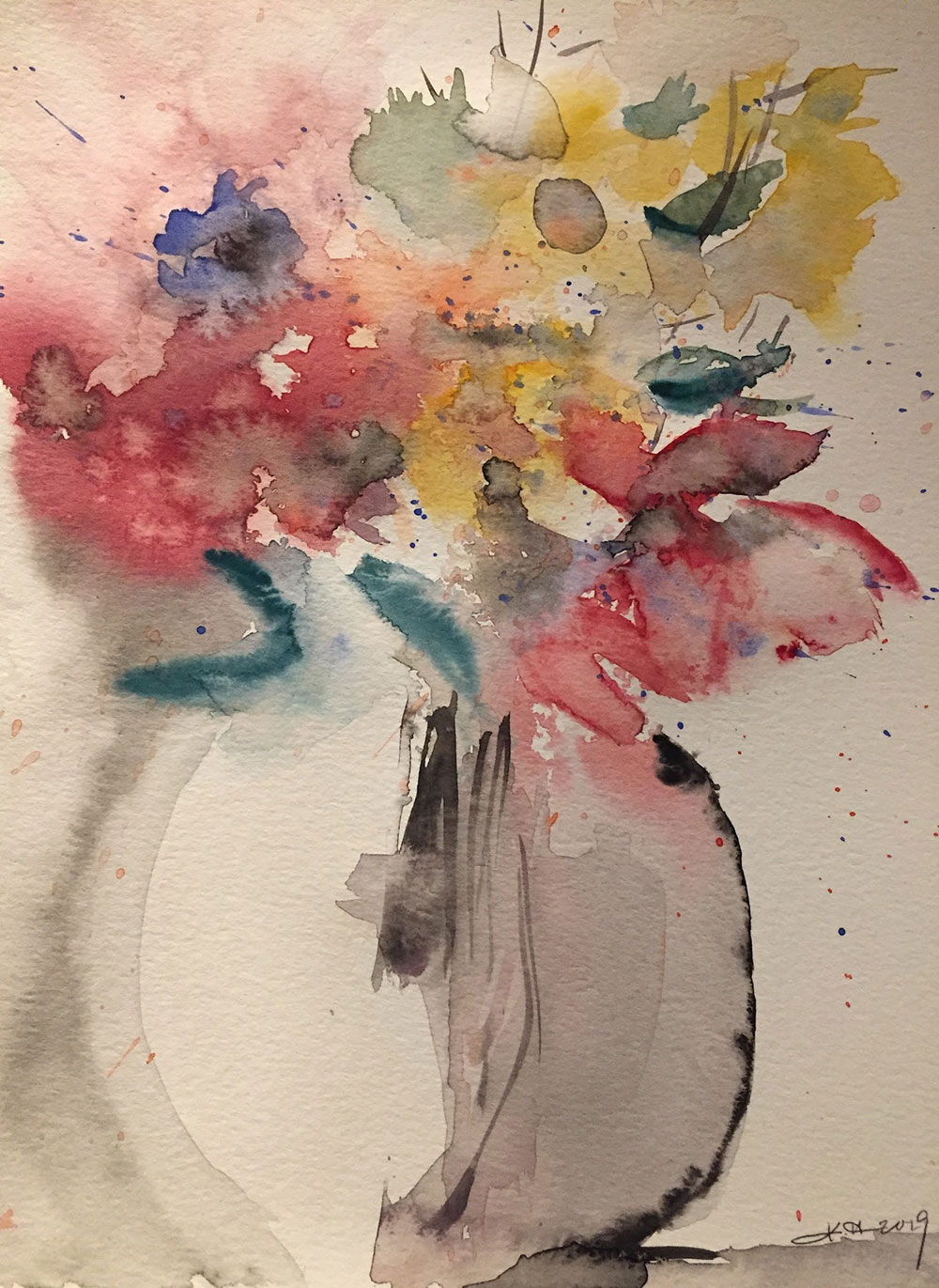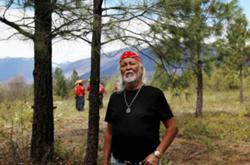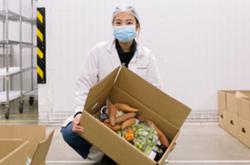In 2006, Keiko Honda was 38 years old and living a busy life. She was a successful research scientist in cancer epidemiology at Columbia University and raising her toddler in the Hell’s Kitchen neighbourhood of New York City. But one Monday morning, Honda’s life took an unexpected turn. She felt numbness and tingling in her right hand and leg. As the numbness started progressing in her left leg, she called two friends to watch her daughter and one to take her to the hospital.
Doctors at the hospital made a discovery that changed the course of Honda’s life: she had transverse myelitis, or TM, a rare neurological disorder characterized by inflammation in the spinal cord that affects one to eight of every million people in the United States. Honda was paralyzed from the chest down. After spending 74 days in the hospital and three more years in New York City, she moved to Vancouver to have a wheelchair-accessible home, to be closer to nature and to take care of her daughter.
Honda’s new memoir, Accidental Blooms, will be published by Caitlin Press this month. In it, Honda shares her life before, during and after her diagnosis. She explores the blessings of humanity and the relationships that have sustained her. The book examines Honda’s art practice, her community involvement, motherhood and identity as a Japanese immigrant.
The Tyee caught up with Honda recently in her Vancouver home. This interview has been edited for length and clarity.
The Tyee: What does the memoir’s title, Accidental Blooms, mean?
Keiko Honda: If I could combine writing and painting into one, I would. Painting is a relaxing pastime, free from the pressure of achieving perfection, which is not what writing is about. Writing gets involved with the world in a very meticulous, adverse way, but painting provides such a breathing space. Creativity flows effortlessly when I’m talking about watercolour. When I combine these two, I feel like I’m empowered to transform my implicit understanding into explicit expressions.
One day, I was watercolouring [and remembered the] Khalifa effect. It happens accidentally among watercolour beginners, and it is the principle of fluid dynamics where the pigment flows from one surface to another, with different pigment concentrations, creating some unexpected eruptions that you can’t control.
Every time I made [something], I called it an accidental bloom. I feel a personal connection with that bloom. Because it reminds me of someone who bravely ventures into uncharted territories; whether it may be resolved in a big splash or the success of embarrassment, often we all can relate to that.
Those splashes, in a way, give me a new insight into how I see things differently, and the beauty. I took these accidental blooms for the title from that watercolour writing fusions.

You describe your life in specific detail and talk about how much your daughter, Maya, means to you from the time she was born until now, a teenager. How did your diagnosis change the way you thought of motherhood?
It was really hard. I had Maya late, when I was 37, and then at 39, I was paralyzed. I was also in the middle of my career taking off. I was breastfeeding, trying to wean her, but she didn’t. I ended up breastfeeding for 20 months until I came down with paralysis.
But what happened is for the first four days, I couldn’t see her. I was fighting for my life at the hospital. On the fifth day, she came to the hospital. I was expecting my baby Maya to rush to me saying “Mommy!” but it wasn’t like this. She couldn’t even make eye contact, completely looking down. Like a lost child.
At that moment, I had to regain my trust. The whole medical team understood that I needed some purpose in life. So I went in the hallway and met her every day for the next month or so. Even though I had tests, diagnosis, care; they made sure that I saw my daughter. My switch was on to be a mother, to be a strong mother.
People often ask me, “Keiko, did you ever have time to grieve?” I said no. I was on all the time [after] witnessing my daughter becoming disconnected. My motherhood was reinforced. Sure enough, after two weeks, we reconnected, and she became well-known in the hospital.
I have to tell my daughter even though she perhaps has different ideas: it must have been difficult when I went through my divorce, the mother who is in a wheelchair and often can’t come to the pumpkin patch, or other things. We went through a lot, but in a way, I was saved by her energy and presence.
Until recently, she was part of the main centre of my life. Everything revolves around her. It has continued, but now it’s a different phase. Being a mother is a wonderful experience. I often wonder, if I didn’t have my daughter, what would happen? I’m sure I still probably would have witnessed a beautiful part of humanity, but it gives me a focus.
You talk about shifting your life around your TM diagnosis. Can you describe how you thought of it when it first happened versus now?
When I became paralyzed, my life went completely upside down. In seven to eight hours, I was unable to move and unable to work for life. The irony lies in my background as an epidemiologist to believe in the problem of statistics.
It was not only an exceedingly rare condition, but also made me ponder why I became that one person, that question that I will never perhaps be able to find the definitive answer to. When you become the one, you have a totally different relationship with it.
During hospitalization, I had many moments when I felt I was on the brink of death due to complications, including airway choking. Despite that I was strong-willed to survive, I felt life was arbitrary, sometimes completely out of control. I learned later on from a specialist in TM at Johns Hopkins that the average life expectancy of his small cohort of TM patients was about 17 years after the onset.
Before, when I was independent and able-bodied, I understood, in a way the scholar understands, the third-person knowledge. But when you become the one, you gain first-hand experience going through lived experience. In a way, it enriches my understanding of health and social support in co-creation: all of those things that I didn’t understand as a researcher before.
Your book covers transformational parts of your life from your diagnosis to motherhood. Can you tell me the writing process of bringing these personal moments all together?
I started writing a stand-alone essay right after my mom passed away, in the time of the COVID-19 lockdown.
I was used to writing scientific papers, where not just the writing but the process of discovery goes through very precise research questions, not personal ones.
Writing a memoir was a completely different challenge for me. So was starting to write in the first person. At the beginning, I felt like I didn’t have [anything] significant to say, or was hesitant to say it fully.
It was challenging. But if you use other mediums like watercolours, [there are] certain things like aha moments when the accidental bloom happens. Even though it is a complete mistake, it is something that potentially could be beautiful, a different way of seeing.
Another question I had was how to identify and at the same time differentiate from the interconnected community to the really big, personal deep questions. To what extent I’ve changed, and to what extent I still remain.
Somehow the watercolours and writing are a breakthrough about knowing myself. The act of making itself evolves into some sort of discovery; asking questions is a part of the artistic process that you need to do.
When you moved to Vancouver, you soon became involved with the community by creating the Artists in Residence Salon and, shortly after, the Vancouver Arts Colloquium Society. Why was this important for you to create?
I had exposure similar to the artist salon when I was in New York; everybody invites [people to] their own home, and there were so many dialogue opportunities that I had, so I loved that aspect. I wanted to bring that to Vancouver, but I knew my wheelchair accessibility would be a challenge. When I moved to this house, which is wheelchair accessible, I first wanted to create lifelong learning while also being ageless.
Age was not a boundary limit to participate because everything in our society becomes age-segregated. Activities [in places] like community centres, even when you try to mix different age groups. My daughter was about four years old when I moved to Vancouver, but as a mother, as an adult, I wanted to do something that’s also stimulating to me, not just to my daughter. I also didn’t know anyone here other than my in-laws. So I thought opening my home was crucial for not just my daughter, but for myself.
I didn’t expect to continue it until today. I didn’t really have a grand plan when I started; it just feels like it’s something right.
How has the community, in your eyes, changed since creating those?
It’s changed so dramatically. By the time I thought about creating a society, I already knew enough people in the community, so it was easy to create a group that connected through creativity or curiosity. I applied the same principle that my passion is intergenerational connection, just because I grew up in a very generational household, but also living in New York was like that too. I think that’s very important, especially as I’m getting older.
My ikigai, which is the reason for being or life purpose, is how I can help young people thrive and meet their full potential, because I think that’s what I received when I was growing up: how to forge intergenerational connections in a place where it is highly segregated, risk-conscious society, so that was really challenging.
If your community is an isolated system, or only a membership-based or more transactional, pay fees, and then you leave, and that’s the end. The real, healthy community has multiple connections, and friends know each other. I see that the community we are creating is something like this, very sustainable and robust. It’s connected in multiple ways.
Throughout your memoir, you mention and explain Japanese traditions, practices, meanings and culture and the significance it has on you. Why was it important for you to include this?
It is funny that you’re born and raised in an immersed culture you don’t know the values and significance of until you leave. I left Japan when I was 26, but most of the time in my New York life, I wasn’t connecting to my Japanese roots.
When I started finding who I am after my paralysis, I was amazed at how much Japanese sensibility is still intact within me, and I am naturally drawn to the idea of yūgen or wabi-sabi, which is hard to articulate and yet something you feel deeply. This surprised me because I thought I was much more of a mix of every culture. But yet, my mentor said to know who you are and where you come from. That wisdom I truly embrace because, after age 50, I started sensing that I want to explore my Japanese sensibility more.
The main message in your memoir is how life can give us challenges and struggle, but how we can teach ourselves and others to see a new, uplifting perspective and do things we enjoy. How did you come to that conclusion in your life?
I’m still in the midst of self-discovery, but I think the main message is part of co-creation, to shape these forces. Hopefully, my story is that we just got into some mystery forces that pull us to break free from certain constraints or some state full of shame. But that co-creation is such a powerful force.
I appreciate and am grateful for all the people part of my life. They are my teachers, mentors and friends that led me to this state. I didn’t do this alone. Resilience is not about “I work so hard,” or “I have certain powers or strengths” to keep me going. It’s not about that, actually. It’s more being aware of a gift you overlook.
If you start something, no matter what it is, starting is the most important. Like watercolour, you don’t have full control; you work with water. The same thing with human society. Just let the natural force guide you to flourish.
Keiko Honda will host a book launch to celebrate Accidental Blooms on Oct. 24 from 6:30 to 9 p.m. at Book Warehouse in Vancouver, 4118 Main St. ![]()
Read more: Health, Books, Rights + Justice, Art
















Tyee Commenting Guidelines
Comments that violate guidelines risk being deleted, and violations may result in a temporary or permanent user ban. Maintain the spirit of good conversation to stay in the discussion and be patient with moderators. Comments are reviewed regularly but not in real time.
Do:
Do not: